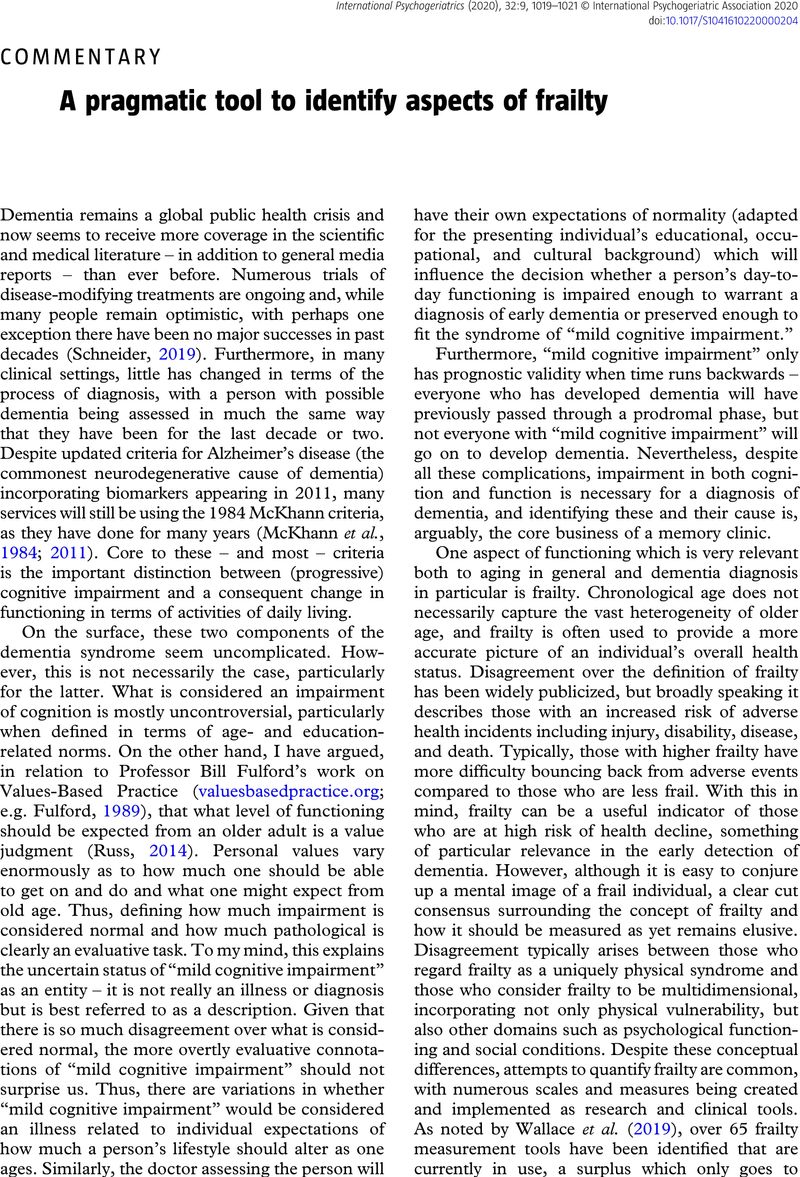Crossref Citations
This article has been cited by the following publications. This list is generated based on data provided by Crossref.
Lameirinhas, Joanes
Gorostiaga, Arantxa
and
Etxeberria, Igone
2024.
Definition and assessment of psychological frailty in older adults: A scoping review.
Ageing Research Reviews,
Vol. 100,
Issue. ,
p.
102442.
Lameirinhas, Joanes
Gorostiaga, Arantxa
and
Etxeberria, Igone
2024.
Defining and assessing psychological frailty in older adults: a scoping review protocol.
BMJ Open,
Vol. 14,
Issue. 3,
p.
e080179.



